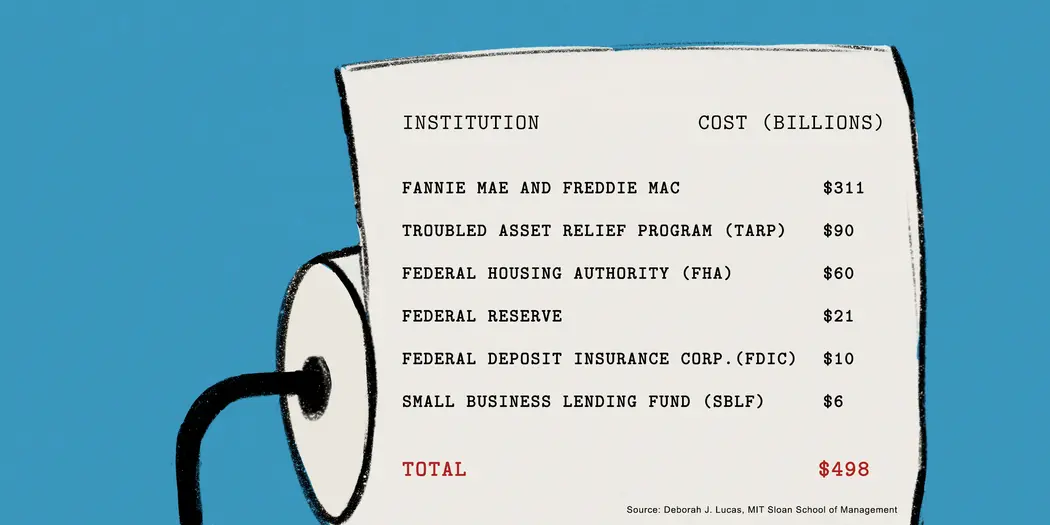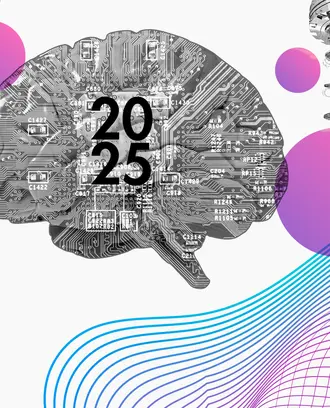Credit: Laura Wentzel
Ask three people their opinion of the U.S. government’s bailouts during the 2008 financial crisis, and you’ll likely get three different answers.
Policymakers from that time argue that bailing out critical financial institutions was necessary to stave off an even greater meltdown. Others maintain the government should have taken even more aggressive actions — to save Lehman Brothers, for instance, or rescue homeowners with underwater mortgages. Still others say that the government shouldn’t have used taxpayers’ money to save wealthy bankers.
Each of those groups can find numbers to support their conflicting views of the bailouts’ price tag.
In 2012, then-President Barack Obama claimed the government got back “every dime used to rescue the banks.” Meanwhile, ProPublica’s ongoing “Bailout Tracker” reported a total net government profit of $96.6 billion as of February 2019, a figure that includes money paid back by bailed-out companies as well as revenue from dividends, loan interest, warrants, and other proceeds. In contrast, a 2015 Forbes article claimed the U.S. had by then paid out $4.6 trillion of $16.8 trillion in committed funds.
Redoing the math
None of those numbers are accurate, according to Deborah J. Lucas, MIT Sloan distinguished professor of finance and director of the MIT Golub Center for Finance and Policy.
Popular accounts of bailout costs tend to severely overstate or understate their economically relevant value, Lucas writes in a paper to be published in the Annual Review of Financial Economics.
Professor Deborah J. Lucas pegs the cost of the 2008-09 bailouts at $498 billion.
According to Lucas, an accurate measure of cost requires taking a fair value approach — one that considers the full range of future gains and losses, and that recognizes the cost of that risk. Lucas draws selectively from existing costs estimates, such as those from the U.S. Congressional Budget Office, which use that method, and she augments those numbers with calculations based on various data sources from that period.
By those calculations, the total direct cost of crisis-related bailouts on a fair value basis was about $498 billion, which amounted to 3.5 percent of gross domestic product in 2009.
As for who directly benefitted, Lucas found that the main winners were the large, unsecured creditors of large financial institutions. While their exact identities have not been made public, most are likely to have been large institutional investors such as banks, pension and mutual funds, insurance companies, and sovereigns.
More bailouts to come?
Why is it important to get the number right? Meaningful measurement of the direct costs of bailouts will arm policymakers with critical information on which to base decisions in future crises, said Lucas.
Related Articles
And credible cost assessment may help reduce political and policy discord around fairness. “Unless we can agree on what things cost, we're not going to be able to agree on the right policy response,” she said.
Public aversion notwithstanding, “most economists don't believe that we can prevent all financial crises,” she said. “And that means we’re likely to bail out some financial institutions in the future.”
When crisis hits, policymakers have to act fast — which is why it makes sense now to study the cost and benefits of the various tools available to them.
The many new regulations put in place to prevent the need for future bailouts also require further study. “Policymakers have to weigh the costs of future bailouts against the costs of the regulatory burden imposed by trying to prevent the need for them,” Lucas said.
“We haven’t had an explicit conversation about what regulations are cost-effective or what government policies could be most cost-effective in the future,” Lucas said. “And you can’t know if a policy is worthwhile if you don’t know how much it costs.”
Credit: Laura Wentzel
Inventory of 2009 bailouts
Lucas’s analysis of the direct costs and direct beneficiaries of the major U.S. government bailouts includes:
- The Troubled Asset Relief Program, in which the government purchased equity and warrants in distressed banks as well as in General Motors and AIG.
- Government capital infusions into Fannie Mae and Freddie Mac (to this day still under government conservatorship).
- Government losses arising from ongoing and expanded federal loan and loan guarantee programs, including on mortgage guarantees of the Federal Housing Administration, and on federal student loans.
- Increased FDIC coverage (which temporarily increased the cap on insured deposits to $250,000 and created a program that gave unlimited coverage of transaction accounts to banks).
- Federal Reserve emergency actions designed to provide more liquidity to the market.




